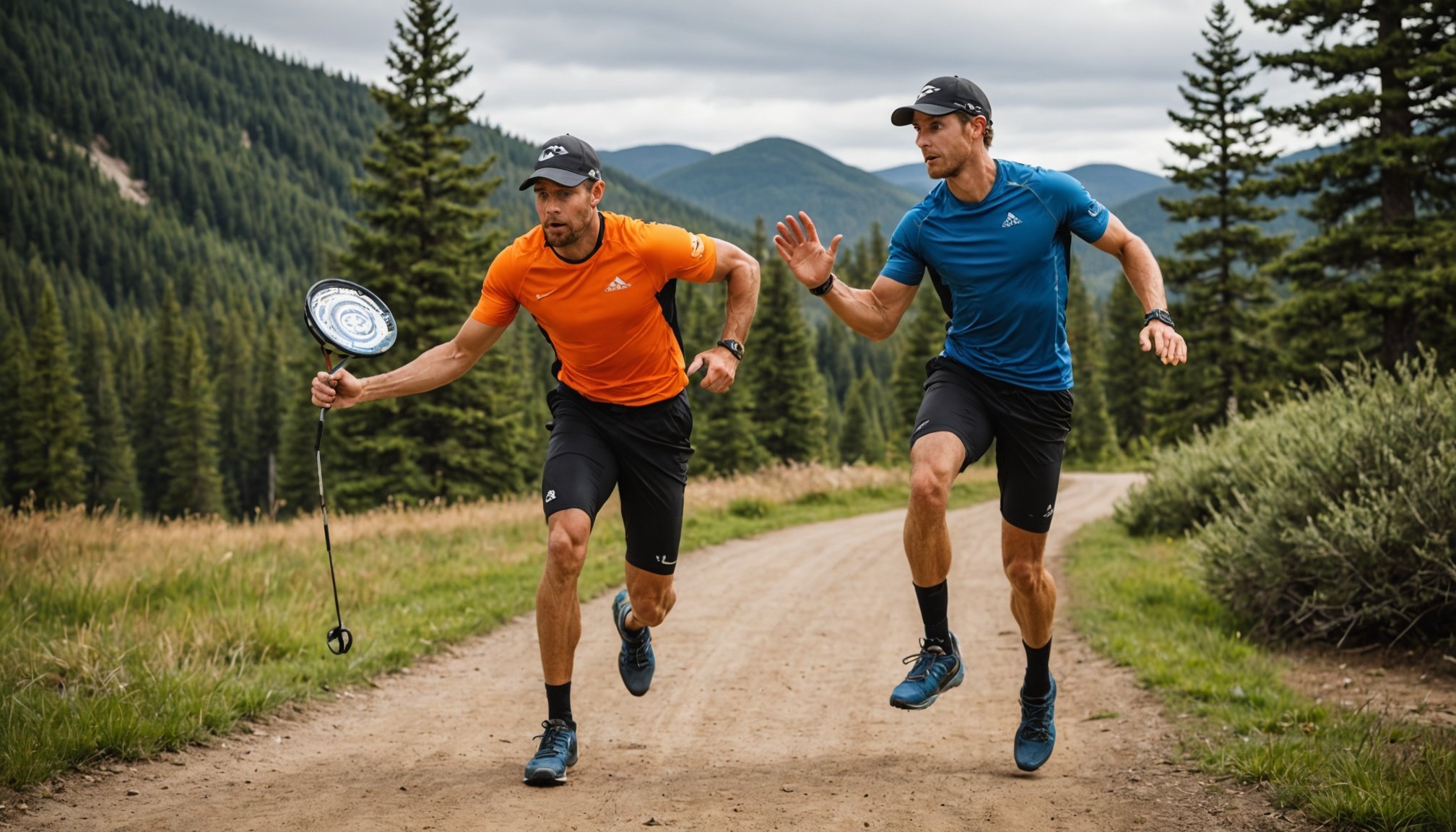Mastering Grip Techniques in Disc Golf
In disc golf, understanding various grip techniques is crucial. These techniques can significantly enhance your game by giving you better precision grip and overall disc golf performance. Different grip styles directly impact how a disc is thrown, influencing both power and control.
When discussing grip techniques, two fundamental styles often come up: the power grip and the control grip. The power grip involves curling all four fingers tightly under the rim of the disc, maximizing the grip’s surface area. This style is ideal for long drives where distance is the primary objective.
In the same genre : Unveiling Groundbreaking Research: How CBD Eases Pain for Contact Sport Athletes
Conversely, the control grip features a more relaxed approach, using fewer fingers and concentrating on stability and finesse. This grip is preferred when precision overpowers distance, making it essential for accurate midrange throws and putts.
However, many players stumble upon certain common mistakes while developing their grip techniques such as gripping too tightly, which can cause inaccurate throws. It’s essential to maintain balance in pressure, ensuring that the grip complements the throw’s mechanics without overstraining. Understanding these aspects will improve your prowess, transitioning each throw from mere attempts to calculated actions.
Additional reading : Unleashing Youth Speed: Effective Techniques to Accelerate Young Athletes
Analyzing the Impact of Grip on Throw Accuracy
Achieving accurate throws in disc golf significantly depends on mastering the intricacies of your grip technique. Grip influences the entire throw mechanics, translating energy from your body to the disc. The relationship between grip pressure and throw accuracy is crucial: applying excessive force may lead to inaccuracies, whereas a too-loose grip can impede control and decrease distance. Balancing this pressure can refine your throws, enhancing both distance and accuracy.
Physics of Grip Pressure
Gripping a disc too tightly can hinder the natural flow of your throw, forcing unnecessary strain and reducing precision. Conversely, a relaxed but secure grip allows for a stronger release, optimizing the disc’s flight path. This optimal pressure balance is essential for maintaining consistency in your throws.
Gripping Techniques for Different Disc Types
Adapting grip techniques to different disc types—drivers, midranges, and putters—can further fine-tune control and performance. Drivers often necessitate a firmer grip to maximize distance, whereas putters benefit from a lighter touch for precision in short throws. Discovering individual preferences for each disc type enables tailored disc golf throwing techniques, elevating your game.
Evaluating Grip Influence on Throwing Results
Observing professional players’ grips provides insights into how they adapt methods to achieve consistent results. Analysing these adaptations can inspire modifications to your technique, fostering improvement in your overall disc golf throwing techniques.
Preparing for Peak Performance in Triathlons
Engaging in Triathlon Carb Loading is vital for maintaining energy during demanding endurance events. This process involves increasing carbohydrate intake before race day to build up glycogen stores in the muscles. Such preparation ensures that athletes have a readily available energy source to support extended physical exertion, thus enhancing performance nutrition.
Importance of Carbohydrate Loading
Carbohydrate loading plays a crucial role in triathlon preparation, as it delays the onset of fatigue during the race. By boosting glycogen reserves, athletes can sustain their speed and stamina, leading to improved overall race day preparation.
Science Behind Optimal Carb Intake
Understanding the science behind carb intake is essential for a successful loading strategy. Typically, athletes start this process about three days before the race, aiming to consume 8-12 grams of carbohydrates per kilogram of body weight daily. This structured increase ensures optimal glycogen saturation without causing digestion issues.
Recommended Carb-Loading Strategies
Adopting effective carb-loading techniques involves gradually increasing carb consumption while tapering physical activity in the days leading to the event. Popular strategies include incorporating carb-rich meals like rice, pasta, and oats, combined with hydration to aid digestion. Tailoring these methods to individual needs can significantly enhance a triathlete’s performance.
Creating a Personalized Carb Loading Plan
Customizing a carb loading plan requires an understanding of your unique triathlon nutrition needs. This involves assessing your daily carbohydrate requirements in relation to your performance optimization goals. To accurately determine these needs, consider factors such as training intensity, duration, and body weight. Most athletes find that 8-12 grams of carbohydrates per kilogram of body weight per day is effective for building glycogen reserves without causing discomfort.
Understanding Your Daily Carb Needs
Knowing how much carbohydrate you need daily is crucial for maintaining energy levels and avoiding fatigue. This involves correlating your dietary intake to your physical performance optimization targets, considering individual metabolic rates and exercise demands.
Timing Your Carb Intake for Maximum Effect
To maximise your triathlon nutrition, timing is key. Begin carb-loading about three days before your event, tapering physical activity while increasing carbohydrate intake. This structured approach ensures glycogen stores are at their peak come race day.
Monitoring Your Body’s Response
Using app-based tracking tools can help monitor your body’s response to the custom carb loading strategy. These applications can track changes in body weight and energy levels—valuable data for fine-tuning your approach and ensuring your body optimally responds to dietary adjustments.
Overcoming Common Carb Loading Mistakes
Carbohydrate loading is essential for triathlon performance optimization, but it’s easy to make nutrition mistakes along the way. Recognizing these carb loading pitfalls can make a significant difference on race day. One common error involves overloading on carbohydrates without tapering exercise, leading to digestive stress rather than energy gains. To avoid this, gradually increase carb intake while slightly reducing training intensity.
Another mistake is neglecting hydration. Carbs need water to be stored effectively as glycogen, so remember to drink enough fluids. Additionally, relying solely on high-sugar, processed carbs can cause energy spikes and crashes. Choose complex carbohydrates, such as whole grains and legumes, for sustained energy release.
Learning from past race day errors is crucial. If previous races left you feeling sluggish or experiencing stomach issues, re-evaluate your carb-loading strategy. Expert athletes often share valuable insights, highlighting the importance of trial and error in finding what works best individually. Adjust strategies based on these experiences to refine triathlon nutrition plans effectively.
Expert testimonials often emphasize personalization, advocating for adjustments and flexibility. This prevents repeat mistakes and enhances performance optimization, ensuring you’re ready for the challenges ahead.








